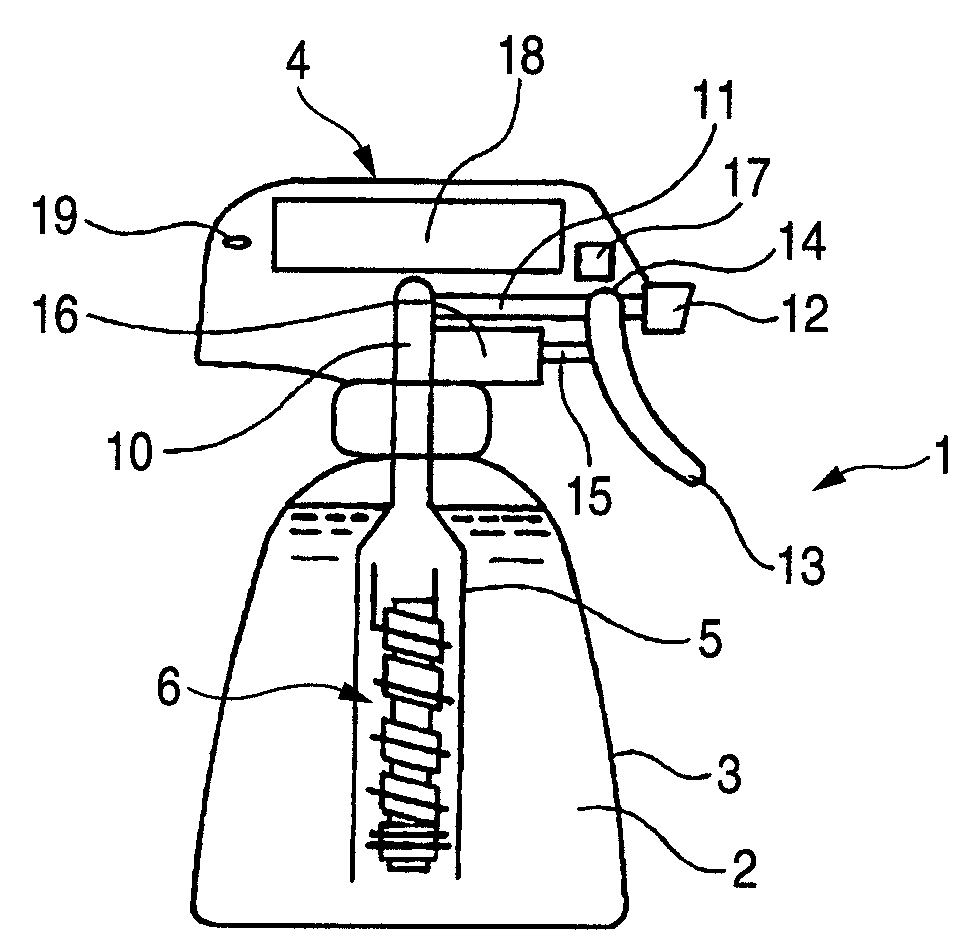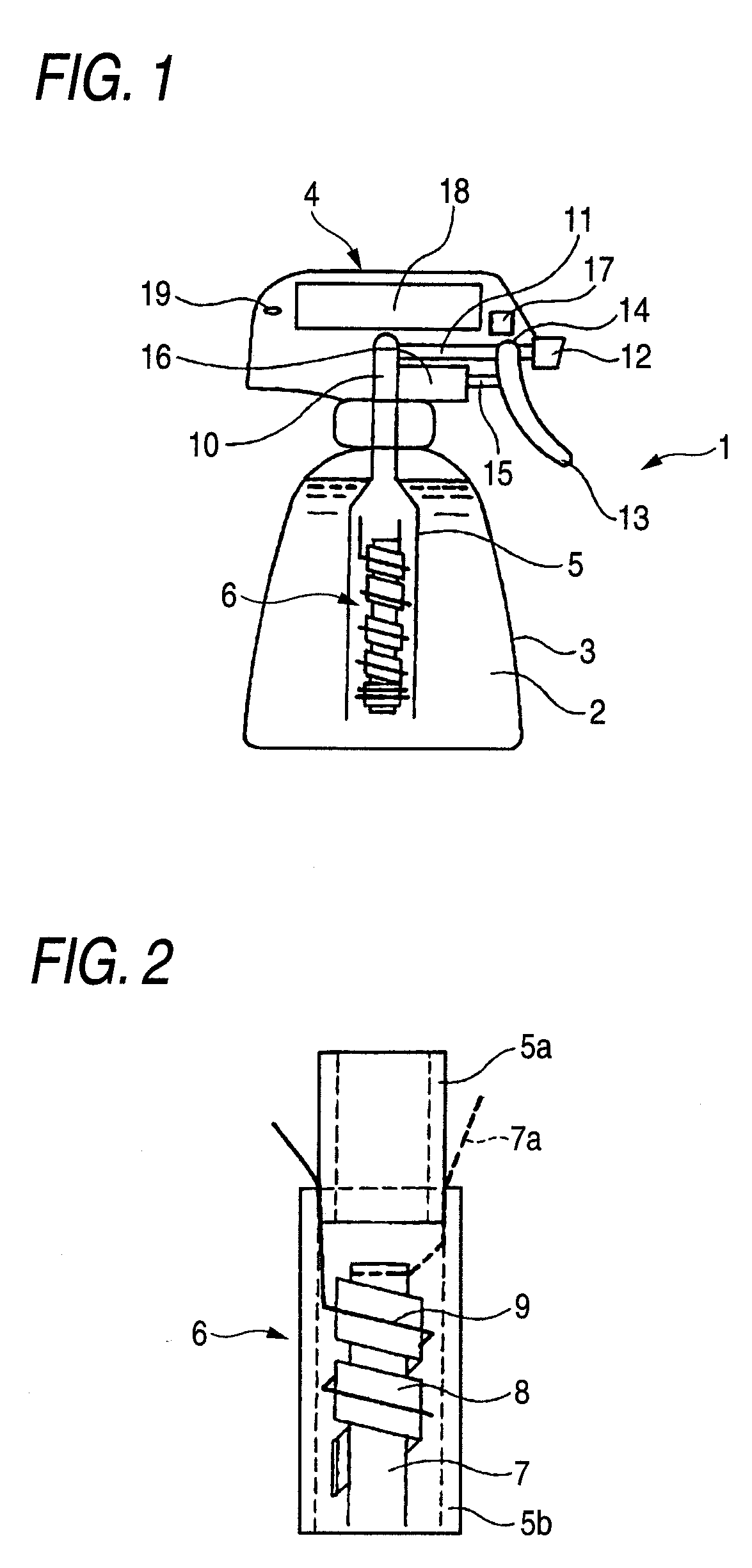Membrane-electrode assembly, electrolytic unit using the same, electrolytic water ejecting apparatus, and method of sterilization
a technology of membrane electrolysis and electrolysis water, which is applied in the direction of energy-based chemical/physical/physico-chemical processes, crystal growth processes, disinfection, etc., can solve the problems of large amount of chlorine compound bactericides, arousing troubles, and cleaning, etc., and achieves high performance and easy production
- Summary
- Abstract
- Description
- Claims
- Application Information
AI Technical Summary
Benefits of technology
Problems solved by technology
Method used
Image
Examples
example 1
[0178]A rod made of niobium (diameter, 2 mm; length, 5 cm) on which a conductive-diamond catalyst (dopant boron concentration, 500 ppm) had been deposited was used as an anode. A strip of an ion-exchange membrane (Nafion 350, manufactured by DuPont; thickness, 0.35 mm; width, 2 mm) was spirally wound as a diaphragm around the anode. A commercial platinum wire (diameter, 0.4 mm) was wound as a cathode on the diaphragm to obtain an anode-membrane-cathode assembly. An electrolytic unit including this membrane-electrode assembly fixed therein was connected in a trigger type sprayer shown in FIG. 1 to a PE resin tube attached to the intake. A 9V prismatic battery was mounted in the head of the trigger type sprayer. In a circuit part, the electrode terminals were connected to a variable resistor and a switch with a wiring. The vessel was filled with 500 cc of pure water.
[0179]The trigger was pulled, upon which the circuit was switched on and a current flowed between the battery and the ce...
example 2
[0181]The same test as in Example 1 was conducted, except that the vessel was filled with tap water containing 0.1 g / L sodium chloride. As a result, the ozone concentration and hypochlorous acid concentration in the solution yielded were 3 ppm and 0.5 ppm, respectively (corresponding to current efficiencies of 5% and 0.3%, respectively). The terminal voltage of the cell was 7.5 V and the current was 0.4 A. The trigger operation was repeated 2,000 times. As a result, the current efficiencies for these hydrolysis products were almost the same as the respective initial values. A deposit of calcium and magnesium compounds was observed in a small amount on the cathode.
example 3
[0182]The same test as in Example 1 was conducted, except that a rod made of titanium on which an iridium oxide (5 g / m2) catalyst had been deposited was used as an anode and tap water containing 0.1 g / L sodium chloride was used. As a result, the terminal voltage of the cell was 5.5 V and the current was 0.45 A. The hypochlorous acid concentration and ozone concentration in the solution yielded were 10 ppm and 0.1 ppm or lower, respectively.
PUM
| Property | Measurement | Unit |
|---|---|---|
| compositions | aaaaa | aaaaa |
| concentration | aaaaa | aaaaa |
| pH | aaaaa | aaaaa |
Abstract
Description
Claims
Application Information
 Login to View More
Login to View More - R&D
- Intellectual Property
- Life Sciences
- Materials
- Tech Scout
- Unparalleled Data Quality
- Higher Quality Content
- 60% Fewer Hallucinations
Browse by: Latest US Patents, China's latest patents, Technical Efficacy Thesaurus, Application Domain, Technology Topic, Popular Technical Reports.
© 2025 PatSnap. All rights reserved.Legal|Privacy policy|Modern Slavery Act Transparency Statement|Sitemap|About US| Contact US: help@patsnap.com



